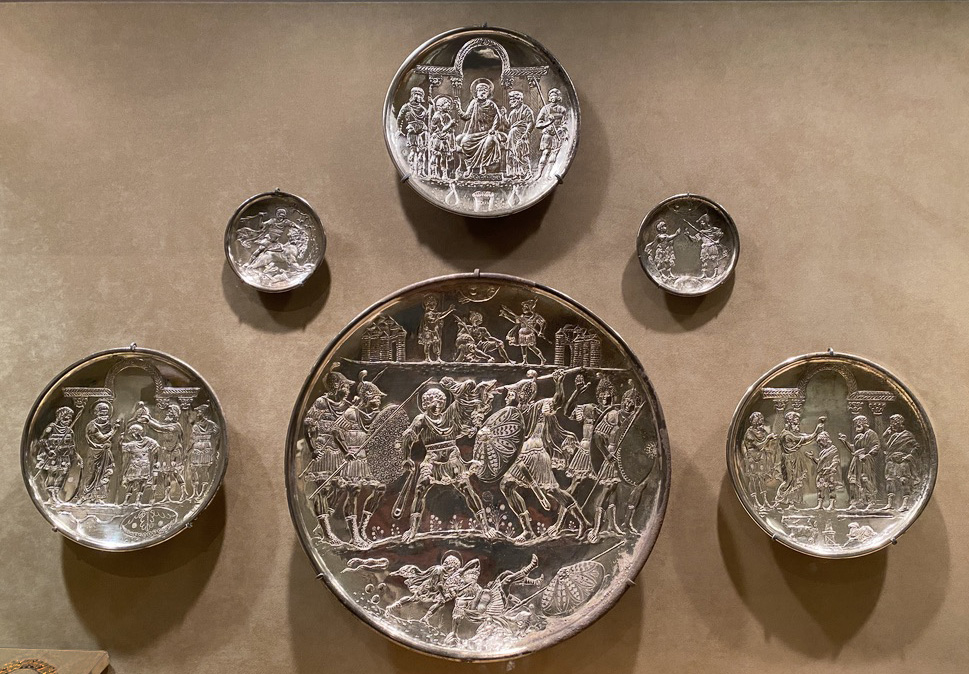Silver Plates with Episodes from the Life of David

Constantinople, 628-630
Silver
Metropolitan Museum of Art
"In 628–29 the Byzantine emperor Herakleios (r. 610–41) successfully ended a long, costly war with Persia and regained Jerusalem, Egypt, and other Byzantine territory. Silver stamps dating to 613–29/30 on the reverse of these masterpieces place their manufacture in Herakleios’s reign. The biblical figures on the plates wear the costume of the early Byzantine court, suggesting to the viewer that, like Saul and David, the Byzantine emperor was a ruler chosen by God. Elaborate dishes used for display at banquets were common in the late Roman and early Byzantine world; generally decorated with classical themes, these objects conveyed wealth, social status, and learning. This set of silver plates may be the earliest surviving example of the use of biblical scenes for such displays. Their intended arrangement may have closely followed the biblical order of the events, and their display may have conformed to the shape of a Christogram, or monogram for the name of Christ." — From the museum's commentary on the plates
For discussion of the individual plates, choose from among these links (clockwise from the lower left):
Read more about images of King David.
Read Kurt Weitzmann's study of the plates.
Photographed at the museum by Richard Stracke, shared under Attribution-NonCommercial-ShareAlike license.